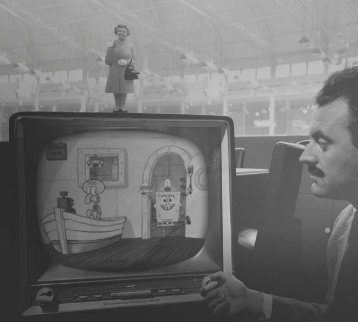Play Archivist

| Full name | Play Archivist |
| Description | The game slogan is “Let the source be with you. Fight your battle for the truth. Find out in a few minutes what you don’t know about archives.” It’s quiz based but shaped as an online chat (similar to MSN or WhatsApp) and simulates an investigation quest, where the user is the protagonist in first person, and interacts verbally (chatting) with an investigation guide. |
| Producer | Promemoria Group |
| Genre | Chat dialogue storytelling based game |
| Available platforms | Android, iOS, web-based: https://play.archivi.st/ |
| Year of production | 2018 |
| Purpose of the game | Developed in order to disseminate and underline the importance of public archives, this game tests the students ability to distinguish the sources of information and to use real archives (online or physical) in order to find the original sources of counterfeited material.The purpose of this game is to show how useful and relevant can be official public articles in as a support for information truth checking. |
| Player(s) (single/multiplayer) | single player |
| Language | IT |
| License | open free |
| Resource type | Game | |
| URL | https://play.archivi.st/ | |
| General objectives | ||
| Learning | ||
| Entertainment | Yes | |
| Ethical | ||
| Others | ||
| Related topics/Glossary – Keywords | None | |
| Expected learning outcomes | ||
| Knowledge | The purpose of this game is to show how useful and relevant can be official public articles in as a support for information truth checking. | |
| Skills | ||
| Abilities | ||
| Teaching methodologies/Activity outline | ||
| 1. Starting a challenge: (brainstorming problem situation. By asking the students questions, the teacher stimulates their thinking) | The game is very engaging and quite fun. It is perfect for introducing the topic. It can be in solo or in small time. | |
| 2. Activation (In Class) / Explanation: (ask the students to watch the videos, read articles, etc. related to the learning outcomes) | ||
| 3. Processing: (ask your students to do this experience at home or in the classroom) | ||
| 4. Conclusion and evaluation reflections | ||
| Information and transliteracy competencies | ||
| Scores: 0 (none) to 5 (strong) | ||
| Critical Thinking | 4 | |
| Creativity | ||
| ICT/Digital Skills | ||
| Collaboration | ||
| Information Skills | 4 | |
| STEAM competencies | ||
| Creative Thinking | ||
| Critical Thinking | 4 | |
| Mathematical Thinking | ||
| Scientific Thinking | ||
| Activity development | ||
| Description of the game use to achieve the learning goals | ||
| Required tool(s) | ||
| Instructions for students | ||
| Final Comments | ||
| Required settings | None | |
| Class management | ||
| Individual work | Yes | |
| Team work | ||
| Whole group | ||
| Time management | ||
| Short activity (< 1h) | Yes | |
| Medium activity (>1h;<1 day) | ||
| Long activity (> 1 day) | ||
| Sources/extra readings | None |
| Scores 1 (very poor) to 10 (excellent) | |
| Assessment | 7/10 |
| Playability | 8/10 |
| Lastability | 5.5/10 |
| Engagement level | 8.25/10 |
| User interface | 8.75/10 |
| Storytelling | 7.75/10 |
| Digital competence for avoiding fake content | 5/10 |
| Plan how to find a specific information | 2/10 |
| Identify and scope the necessary information | 2/10 |
| Evaluate the found information | 5/10 |
| Manage the information | 7/10 |
| Media literacy | 7/10 |
| Visual literacy | 7/10 |
